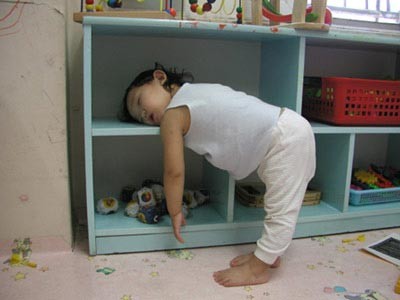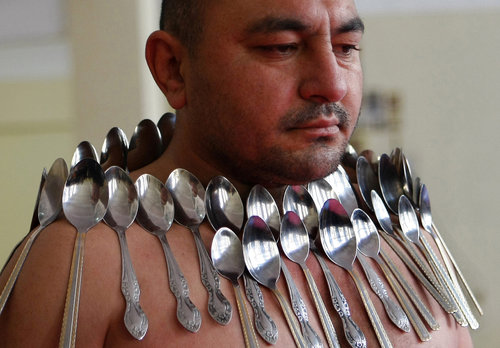Archive for December, 2012
Forgotten Pillars of Personal Growth
 There are a lot of complex self-help programs out there to help us reach our potential. These programs are designed to take us to the next level by building on what we have. And they do help. But implicitly the programs assume we’ve got a foundation in place and it’s solid enough to stand on. But I think our foundation is rickety.
There are a lot of complex self-help programs out there to help us reach our potential. These programs are designed to take us to the next level by building on what we have. And they do help. But implicitly the programs assume we’ve got a foundation in place and it’s solid enough to stand on. But I think our foundation is rickety.
To be what we must be is our responsibility, and if we’re going to get any value from our self-help programs it’s our responsibility to establish the conditions for growth.
Here are three forgotten pillars that must be in place if we’re to grow:
Good sleep habits – most of us our sleep deprived, yet the data is clear that a rested brain thinks better. If we’re to grow, we’ve got to think better, and to think better we need more rest.
Good eating habits – most of us eat poorly. We eat too much which hurts our bodies and we eat too infrequently which hurts our brains. We all know our muscles need calories or they don’t work well, but what we forget is our brain also needs calories. (It’s 2% of our weight but consumes about 20% of our total calories.) And when we eat infrequently our blood sugar drops and so does our brains’ ability to think. If we’re to grow, we need to eat better.
Good fitness habits – most of us don’t exercise daily. Our brain is connected to our body, and they interact. When the muscles are exercised they cause the brain to make chemicals that sooth and calm. When we exercise we have a better attitude, have more stamina, and think better. If we’re to grow, we need more exercise.
The big three are far more powerful than the best self-help scheme, but they’re also far scarier. They’re so scary because they’re easy to measure and completely within our control.
After a one month trial you’ll know if you’ve slept more, worked out more, and ate better. And if you haven’t, you’ll also know who is responsible.
Lasting Behavioral Change
 Whether it’s innovation, creativity, continuous improvement, or discontinuous improvement, it’s all about cultural change, and cultural change is about change in behavior.
Whether it’s innovation, creativity, continuous improvement, or discontinuous improvement, it’s all about cultural change, and cultural change is about change in behavior.
With the police state approach, detailed processes are created and enforced; rules are created and monitored; and training is dealt out and attendance taken. Yes, behavior is changed, but it’s fleeting. Take your eye off the process, old behavior slips through the fence; look the other way from the rules, old behavior clips the barbed wire and climbs over the wall. To squelch old behavior with the police state approach, gulag energy must be consistently applied.
To squelch is one thing, but to create lasting behavior change is another altogether. But as different as they are, there’s a blurry line of justice that flips innocent to guilty. And to walk the line you’ve got to know where it is:
- Apply force, yes, but only enough to prevent backsliding – like a human ratchet. Push much harder and heels dig in.
- The only thing slower than going slow is going too fast. (Remember, you’re asking people to change the why of their behavior.) Go slow to go fast.
- Set direction and stay the course, unless there’s good reason to change. And when the team comes to you with a reason, deem it a good one, and the cornerstone of trust is laid. (This is a game of trust, not control.)
But there are some mantras to maximize:
- Over emphasize the positive and overlook the negative.
- Praise in public.
- Don’t talk, do.
The first two stand on their own, but the third deserves reinforcement.
This isn’t about your words, it’s about your behavior. And that’s good because you have full authority over your behavior. Demonstrate the new behavior so everyone knows what it looks like. Lead the way with your actions. Show them how it’s done. For lasting change, change your behavior.
Even if changing your behavior influences only one person, you’re on your way. The best prison riots start with a single punch.
Prototype the Unfamiliar
 Today’s answer to everything is process and tools. Define the desired outcome; create the process; create the tools. Problem solved.
Today’s answer to everything is process and tools. Define the desired outcome; create the process; create the tools. Problem solved.
But if the desired outcome is lasting change, deterministic processes and static tools won’t get us there. Lasting change comes from people and their behavior.
Going forward, instead of creating process, create an environment of trust so people will investigate the unfamiliar; and instead of creating tools, create time – time for people to prototype the unfamiliar.
Choose to Choose
 There will always be more work than time – no choice there. But, you can choose your mindset. You can choose to be overwhelmed; you can complain; and you can feel bad for yourself. You can also choose to invert it – you only work on vital projects because less important ones aren’t worth your time. Inverted, work is prioritized to make best use of your valuable time. When there’s too much work you can whine and complain, or you can value yourself – your choice
There will always be more work than time – no choice there. But, you can choose your mindset. You can choose to be overwhelmed; you can complain; and you can feel bad for yourself. You can also choose to invert it – you only work on vital projects because less important ones aren’t worth your time. Inverted, work is prioritized to make best use of your valuable time. When there’s too much work you can whine and complain, or you can value yourself – your choice
Most of us don’t choose what we work on, and sometimes it’s work we’ve done before. You can choose to look at as mind numbing tedium, or you can flip it. You can look at it as an opportunity to do your work a better way; to try a more effective approach; to invent something new. With repeat work you can dull it down or try to shine – your choice.
Sometimes we’re asked to do new and challenging work. You can choose to be afraid; you can make excuses; and you can call in sick for the next month. Or you can twist it to your advantage and see it as an opportunity to stretch. With challenging work you can stunt yourself or grow – your choice.
Negativity repels and positivity attracts – it’s time for you to choose.
 Mike Shipulski
Mike Shipulski